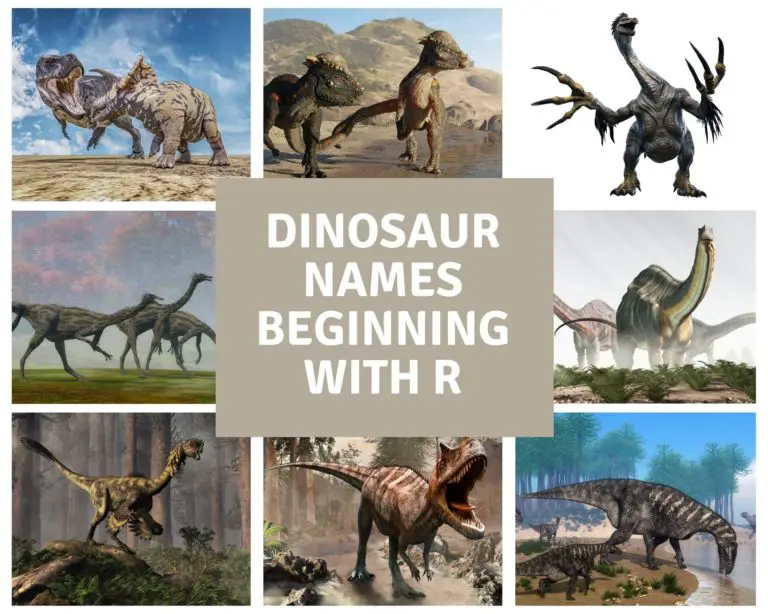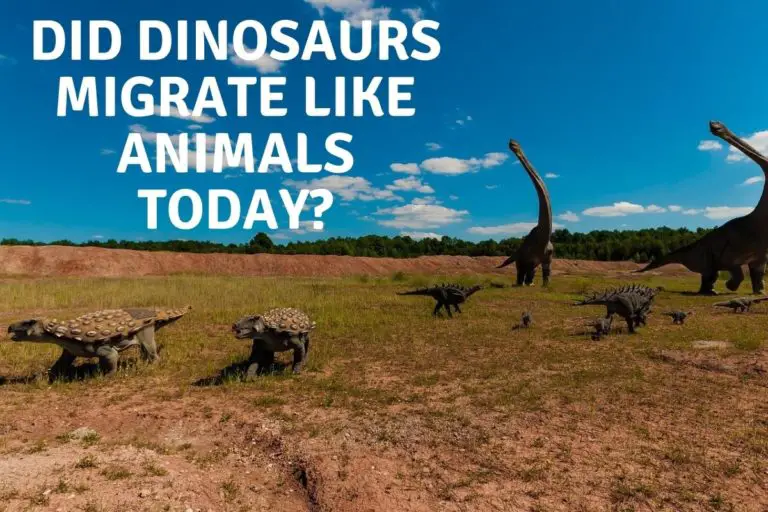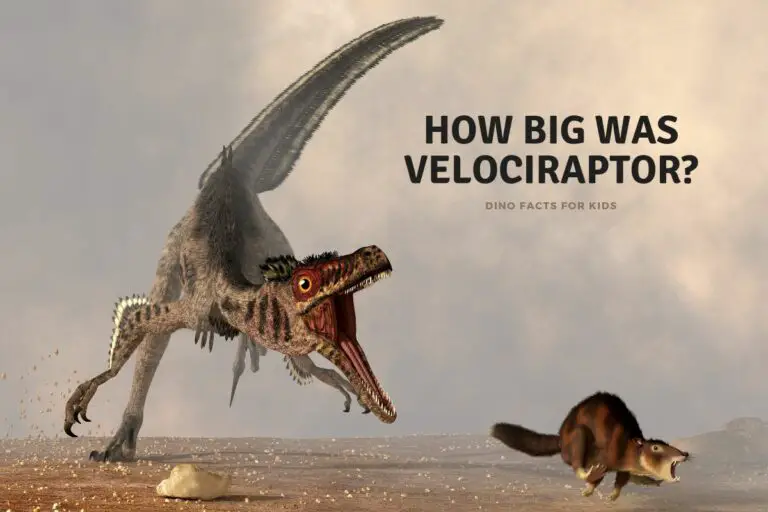The Biggest Ever Lizard : The Megalania
Editorial credit: Erik Laan / Shutterstock.com
Lizards have been roaming our planet for millions of years, along side and after the age of the dinosaurs. Although looking very similar, and even being used in some early dinosaur movies as actually dinosaurs they were an entirely separate species. That didn’t stop them growing to dinosaur size proportions though, and we look at the one giant lizard stands out as the biggest that ever lived: Megalania
Megalania was the largest lizard to ever exist, reaching up to 23 feet in length (7 metres) and weighing around 4000 pounds (1900kg). This huge lizard lived in Australia during the Pleistocene epoch, between 1.5 million and 50.000 years ago. Its diet included large mammals, marsupials. birds, and other reptiles.
We will take a look at the Megalania, a colossal lizard predator that once ruled the Australian landscape. We will look at how big it was, why you can only see fossils and bones of it today, and what made it grow so big!
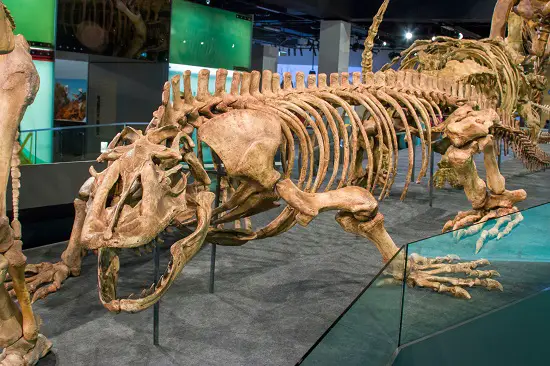
The Biggest Ever Lizard
The largest known lizard that ever lived was the extinct Megalania (Varanus priscus), also known as the giant monitor lizard or the giant goanna. This massive lizard inhabited Australia during the Pleistocene epoch, around 1.5 million to 40,000 years ago. Megalania is a relative of the modern-day Komodo dragon and belongs to the same Varanidae family.
Estimates of Megalania’s size vary, but it is believed to have reached lengths of up to 23 feet (7 meters) and weighed around 4,000 pounds (1900 kilograms).
This enormous size made it the apex carnivore, and being a similar length to a Carnotaurus you can see why. It likely preyed on large mammals, such as the diprotodontids (giant marsupials), you can check those out on the link, and other animals that inhabited the region at the time, including possibly at the end of its time people!
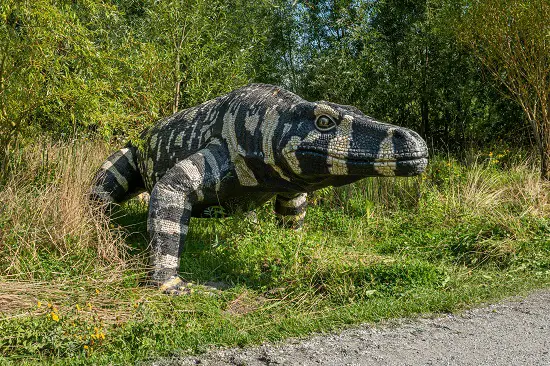
How Big was Megalania The Biggest Lizard in History
As we mentioned above Megalania, is the biggest lizard to ever exist at up to 23 feet in length and with an estimated weigh around 4,000 pounds (about 650 kg) . It had a robust, muscular body, powerful limbs, and a long tail that provided balance and support and looked pretty much like a Komodo Dragon, except being about 4 to 5 times as large
The Megalania’s most intimidating feature next to its size, were its enormous, serrated razor-sharp teeth, perfect for tearing through the flesh of its prey.
The first Megalania fossils were discovered in the 19th century, although only partial fossils they gave scientists a glimpse into the life of this extraordinary reptile.
As only a few complete fossils have been found it does open the size estimates up to a lot of debate and although the most recent in 2009 does have the Megalania at its larger range there have been other estimates that suggested it may only have been 4.5 metres long! , although these were later pushed up again to at least 18feet and 1300 lbs. by the same researcher.
Megalania belongs to the Varanidae family, which includes modern monitor lizards like the Komodo dragon. In fact, the Komodo dragon is Megalania’s closest living relative. Both species share similar physical features, such as a forked tongue and curved, serrated teeth.
However, it was significantly larger than the Komodo dragon, which reaches a maximum length of around 10 feet and weighs up to 200 pounds. We have an article on if the Komodo Dragon is related to dinosaurs on the site.
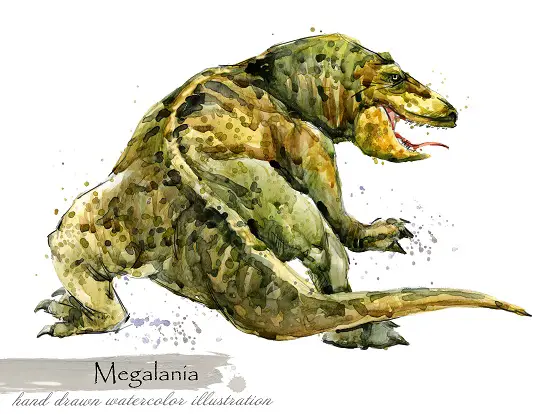
With the Komodo Dragon being the closest relative to Megalania it may have also used a venomous bite to help immobilize its victims, If so this venom would cause rapid blood loss and shock in its prey, making it easier for the giant lizard to finish its meal.
Megalania’s immense size and fearsome appearance meant that it had few, if any, natural predators. Although it may have had some competition from other large predators that lived at the same time like the crocodiles and the marsupial lion, and then later from people who were also alive at the same time as this biggest of all lizards!
Like the Black demon ( although a much older story) this huge lizard may have inspired the legend of the Whowie ( a good name!) which was in Aboriginal Folklore a 23 feet long Goanna lizard (albeit with 6 legs) that ate people.
| Feature | Description |
|---|---|
| Size | Up to 23 feet in length; weight around possibly up to 4000 lbs. (1900kg) |
| Body | Robust and muscular |
| Limbs | Powerful limbs for walking and climbing |
| Tail | Long and strong, providing balance and support |
| Teeth | Enormous, razor-sharp, curved, and serrated |
| Tongue | Forked, similar to modern monitor lizards |
| Diet | Carnivorous; fed on large mammals, birds, and reptiles |
| Hunting Strategies | Powerful jaws and teeth to subdue and dismember prey; possibly used a venomous bite to immobilize victims |
| Habitat | Australian landscape during the Pleistocene epoch |
| Classification | Varanidae family; related to modern monitor lizards, such as the Komodo dragon |
| Role in the Ecosystem | Apex predator with few or no natural predators; shaped the ecosystem and influenced other species |
Extinction of Megalania
The latest Megalania fossils have been dated to around 50,000 years ago an none have been found younger than that. there are a few theories on why it went extinct that, include climate change, human intervention, and competition with other predators.
Climate change during the Pleistocene epoch, characterized by fluctuating temperatures and the advance and retreat of glaciers, may have altered Megalania’s habitat, Megalania may have struggled to adapt to the changing conditions and dwindling food sources.
Competition with other predators may have been a factor. As we stated above Megalania shared its environment with other predators, like the marsupial lion and the giant snake Wonambi . These predators might have competed for the same food sources, at least being a contributing factor in Megalania’s extinction. Although they had lived together for millions of years prior to their extinction.
One common denominator, and really the most likely cause, is the appearance of humans on the Australian continent around 65,000 years ago. It is not an isolated incident that species seem to go extinct soon after humans appear. and the theory suggests that human intervention played a role in Megalania’s extinction. Humans could have competed with Megalania for prey or even hunted the giant lizards themselves, at least helping to cause their extinction.
Megalania in the Media?
Even though this is the biggest lizard ever to walk on Earth there is surprisingly few places you can take a look at it outside of museums, and mostly Australian museums of course. i guess dinosaurs and prehistoric Sharks are still more a box office draw than our more recent giants.
however there are a few places you can get some fictional Megalania action if you so wish. we have highlighted these below.
- Books:
- Meg: Hell’s Aquarium” by Steve Alten: This novel, part of the Meg series, features a Megalania as one of the prehistoric creatures along with Megalodon of course, living in a secret underwater habitat. these are NOT childrens’ books though.
- TV Shows:
- “Primeval” (2007-2011): A British science fiction TV series that briefly features a Megalania in one of its episodes. It was really good actually! And if you can track down a copy it has loads of prehistoric animals in it.
- “Walking with Beasts” (2001): A BBC documentary series that showcases various prehistoric creatures, including a brief appearance of Megalania
- Movies:
- “Journey to the Center of the Earth” (2008): A fun adaptation of Jules Verne’s classic novel, where the characters encounter various prehistoric creatures, including a Megalania, (giant iguana) during their underground adventure.
Conclusion
Megalania was the largest lizard of all time. At 23 feet – 7 meters long, and with weight estimates in the range of 1300 to 4,000 plus pound (650 – 1,900 kg). That is about 2.5 to 3 times longer than a Komodo dragon and at least 5 times as heavy.
Although the exact reason we can see it alive today, and why it went extinct around 50.000 years ago it was likely to to Human action to some degree. However it is possible to see fossils and reconstructions in Museums and online and these give an idea of this lizards huge size.
References
- https://walkingwith.fandom.com/wiki/The_Beasts_Within
- https://en.wikipedia.org/wiki/Megalania
- https://australian.museum/learn/australia-over-time/extinct-animals/megalania-prisca/
- https://a-z-animals.com/animals/megalania/
Hi, I am Roy Ford a General Studies and English Teacher who has taught all over the world. What started as a fossil collection became a great way to teach, motivate and inspire students of all ages and all over the world about dinosaurs and from that and children’s love of dinosaurs came the site dinosaur facts for kids, a resource for all ages.


